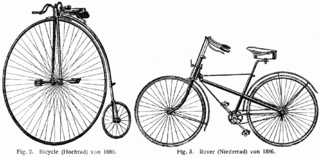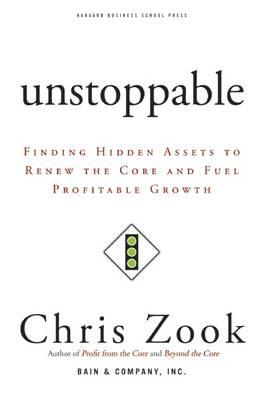Management is the administration of organizations, whether they are a business, a nonprofit organization, or a government body. It is the art and science of managing resources of the business.

In business theory, disruptive innovation is innovation that creates a new market and value network or enters at the bottom of an existing market and eventually displaces established market-leading firms, products, and alliances. The concept was developed by the American academic Clayton Christensen and his collaborators beginning in 1995, and has been called the most influential business idea of the early 21st century. Lingfei Wu, Dashun Wang, and James A. Evans generalized this term to identify disruptive science and technological advances from more than 65 million papers, patents and software products that span the period 1954–2014. Their work was featured as the cover of the February 2019 issue of Nature and was included among the Altmetric 100 most-discussed work in 2019.

A business model describes how an organization creates, delivers, and captures value, in economic, social, cultural or other contexts. The process of business model construction and modification is also called business model innovation and forms a part of business strategy.
Historically there have been differences among investigators regarding the definition of organizational culture. Edgar Schein, a leading researcher in this field, defined "organizational culture" as comprising a number of features, including a shared "pattern of basic assumptions" which group members have acquired over time as they learn to successfully cope with internal and external organizationally relevant problems. Elliott Jaques first introduced the concept of culture in the organizational context in his 1951 book The Changing Culture of a Factory. The book was a published report of "a case study of developments in the social life of one industrial community between April, 1948 and November 1950". The "case" involved a publicly-held British company engaged principally in the manufacture, sale, and servicing of metal bearings. The study concerned itself with the description, analysis, and development of corporate group behaviours.
In the field of management, strategic management involves the formulation and implementation of the major goals and initiatives taken by an organization's managers on behalf of stakeholders, based on consideration of resources and an assessment of the internal and external environments in which the organization operates. Strategic management provides overall direction to an enterprise and involves specifying the organization's objectives, developing policies and plans to achieve those objectives, and then allocating resources to implement the plans. Academics and practicing managers have developed numerous models and frameworks to assist in strategic decision-making in the context of complex environments and competitive dynamics. Strategic management is not static in nature; the models can include a feedback loop to monitor execution and to inform the next round of planning.
In business, a competitive advantage is an attribute that allows an organization to outperform its competitors.
A core competency is a concept in management theory introduced by C. K. Prahalad and Gary Hamel. It can be defined as "a harmonized combination of multiple resources and skills that distinguish a firm in the marketplace" and therefore are the foundation of companies' competitiveness.
In marketing, value migration is the shifting of value-creating forces. Value migrates from outmoded business models to business designs that are better able to satisfy customers' priorities. Marketing strategy is the art of creating value for the customer. This can only be done by offering a product or service that corresponds to customer needs. In a fast changing business environment, the factors that determine value are constantly changing.
Marketing strategy is an organization's promotional efforts to allocate its resources across a wide range of platforms, channels to increase its sales and achieve sustainable competitive advantage within its corresponding market.
The concept of operational excellence was first introduced in the early 1970s by Dr. Joseph M. Juran while teaching Japanese business leaders how to improve quality. It was formalized in the United States in the 1980s in response to "the crisis" among large legacy companies whose market share was shrinking due to quality goods imported from Japan.
Competence is the set of demonstrable characteristics and skills that enable and improve the efficiency or performance of a job. Competency is a series of knowledge, abilities, skills, experiences and behaviors, which leads to effective performance in an individual's activities. Competency is measurable and can be developed through training. The term "competence" first appeared in an article authored by R.W. White in 1959 as a concept for performance motivation. In 1970, Craig C. Lundberg defined this concept as "Planning the Executive Development Program". The term gained traction in 1973 when David McClelland wrote a seminal paper entitled, "Testing for Competence Rather Than for Intelligence". The term, created by McClelland, was commissioned by the State Department to explain characteristics common to high-performing agents of embassy, as well as help them in recruitment and development. It has since been popularized by Richard Boyatzis, and many others including T.F. Gilbert (1978), who used the concept in performance improvement. Its uses vary widely, which has lead to considerable misunderstanding.

Blue Ocean Strategy is a book published in 2004 written by W. Chan Kim and Renée Mauborgne, professors at INSEAD, and the name of the marketing theory detailed on the book.

Adrian J. Slywotzky is an American consultant of Ukrainian origin and the author of several books on economic theory and management.
In marketing, a company’s value proposition is the full mix of benefits or economic value which it promises to deliver to the current and future customers who will buy their products and/or services. It is part of a company's overall marketing strategy which differentiates its brand and fully positions it in the market. A value proposition can apply to an entire organization, or parts thereof, or customer accounts, or products or services.
According to PIMS, an important lever of business success is growth. Among 37 variables, growth is mentioned as one of the most important variables for success: market share, market growth, marketing expense to sales ratio or a strong market position.
Capability management is the approach to the management of an organization, typically a business organization or firm, based on the "theory of the firm" as a collection of capabilities that may be exercised to earn revenues in the marketplace and compete with other firms in the industry. Capability management seeks to manage the stock of capabilities within the firm to ensure its position in the industry and its ongoing profitability and survival.

Bob Andelman was a writer and podcaster. Andelman was the author or co-author of many books about business, culture, and the arts, and produced interviews with figures in popular culture as "Mr. Media".

Profit from the Core: Growth Strategy in an Era of Turbulence is a non-fiction book on business strategy by American business consultant Chris Zook with James Allen. This is the first book in his Profit from the Core trilogy. The book is followed by Beyond the Core released in 2004 and Unstoppable in 2007.

Unstoppable: Finding Hidden Assets to Renew the Core and Fuel Profitable Growth is a non-fiction book on business strategy by American business consultant Chris Zook. This is the third book in his Profit from the Core trilogy, preceded by Profit from the Core released in 2001 and Beyond the Core in 2004.

Beyond the Core: Expand Your Market Without Abandoning Your Roots is a non-fiction book by American business consultant Chris Zook. This is the second book in his Profit from the Core trilogy, followed by Unstoppable released in 2007.








